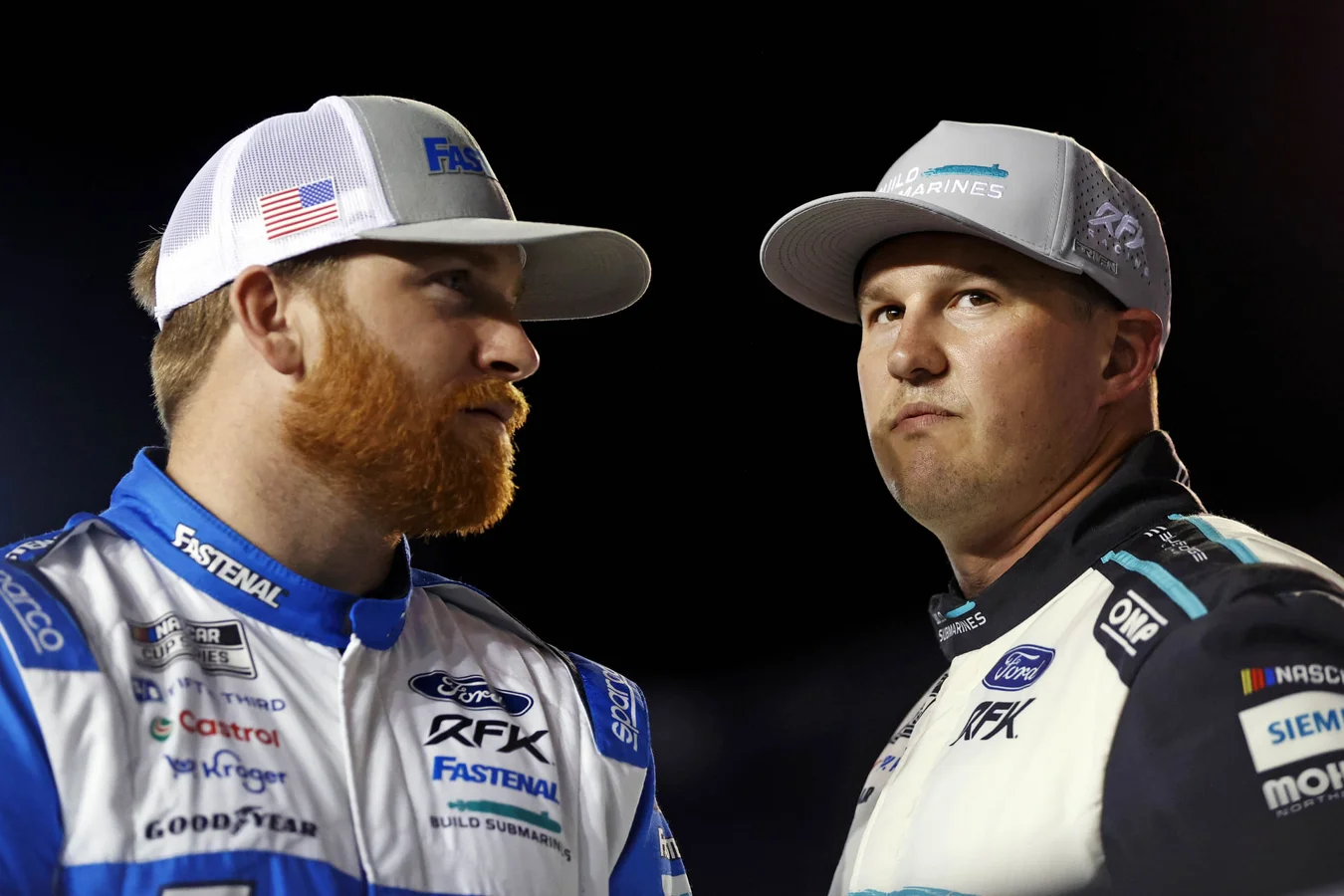As dirt and short track racing struggle to maintain their traditional appeal, content creators like Cleetus McFarland have captured a large audience by presenting racing as an entertaining, chaotic, and approachable experience. Ryan Preece, a NASCAR Cup Series driver, exemplifies this trend, having traded the demands of top-tier racing for McFarland’s unique event earlier this year, signaling a shift in the sport’s direction.
In 2024, Preece took part in the New England 900 at Stafford Speedway, an event promoted by Cleetus McFarland. Driving a nitrous-enhanced Crown Victoria, he managed to outpace veteran Greg Biffle on a Friday night at his home track. While Preece continues to compete in NASCAR driving the No. 60 Ford for RFK Racing, his ongoing involvement with grassroots short track and modified racing shows his connection to the roots of the sport.
Ryan Preece on the Distinctive Atmosphere of Cleetus McFarland’s Races
In a conversation with former Cup driver Kenny Wallace, Preece described the large difference between traditional short track racing and the style brought by Cleetus McFarland. According to Preece, McFarland’s events emphasize enjoyment over financial pressures, a welcome change for many drivers.
“The New England 900, that was a race that Cleetus McFarland/Garrett Mitchell put on at Stafford Speedway with Crown Vicks. I was lucky enough to be invited to race with those guys and (Greg) Biffle and, a bunch of the people that are influencers on YouTube. I just had an absolute blast because it was a stock Crown Vic that just happened to have nitrous and some train horns in it. And it was probably some of the most fun that I’ve ever had racing,” said Preece on Wallace’s YouTube channel (0:56 onwards).
Unlike traditional short track or modified events where drivers invest significant amounts of money into their cars and risk financial loss on every lap, McFarland’s races involve lower stakes, using readily available cars like Crown Victorias, sometimes boosted with gimmicks like nitrous or train horns. This shifts the focus entirely toward entertainment and fan engagement rather than costly competition.

Kenny Wallace also praised McFarland’s approach, highlighting his diverse skills and straightforward passion.
“What’s great about Cleetus is that he’s the real deal. I mean, a man can fly a helicopter. He can build things. So, I mean this in a fun, loving way. The joke is on us because he’s got it figured out.” (7:54 onwards)
The Rise of Cleetus McFarland’s Racing Events and Their Growing Popularity
Cleetus McFarland’s Summit Freedom 500 has become a key annual event held at the Freedom Factory in Florida. The 2025 race drew a mix of professional drivers like Travis Pastrana, Corey LaJoie, Michael Waltrip, Hailie Deegan, Brian Deegan, and Greg Biffle, alongside YouTube influencers and freestyle athletes. This blend of traditional racers and new-age entertainers has created a fresh fan base, fueling growing crowds and online engagement.
The Declining Roots of Grassroots Racing From Ryan Preece’s Perspective
Ryan Preece’s journey reflects the transition in short track racing cultures. He claimed the 2013 NASCAR Whelen Modified Tour title and also won championships at Thompson Speedway and New Smyrna’s Speedweeks, making him a product of the classic grassroots racing scene that now faces challenges preserving its identity.
Preece explained to Kenny Wallace that the showmanship aspect, once integral to short track racing’s appeal, has diminished over time.
“Understanding the show, you know what I mean? That is a lost piece. I feel like short track racing, it’s been forgotten in some regard… Probably a lot of younger racers, they don’t understand it just like I didn’t, when I was younger. But as you get older and you’re a part of the show, you need to understand what your role is,” Preece added on Wallace’s channel. (3:30 onwards)
He noted that legendary drivers like Dale Earnhardt and Rusty Wallace embraced their roles in creating rivalries and compelling narratives that brought excitement to the sport. Today, while Denny Hamlin fulfills that role somewhat at the NASCAR Cup level, the local racing scene has seen its intense rivalries vanish as competitors focus heavily on their equipment and quickly leave events.
“I remember what’s lost around St. Louis area is our great rivalries. You.. had two or three guys that you came to watch. Now it seems like at a local level it’s gone. Everybody is so serious about their chassis that they want to load up and leave the racetrack right away. That’s why I pressed you about that because Cleetus’s race, me and you, we want to go, haha. But buddy, the crowds he gets we gotta pay attention to that,” said Wallace while echoing the concern (5:23 onwards).
Challenges for Grassroots Racing and Signs of Revival
Grassroots promoters find themselves facing a difficult reality as traditional tracks close and fan interest wanes, while Cleetus McFarland successfully fills venues by prioritizing low costs and entertainment value, amplified by social media platforms like YouTube and Instagram. This formula draws younger and more diverse audiences, shifting racing into an entertainment-first model.
However, there is some resistance from established figures in the racing community. Dale Earnhardt Jr. and Kevin Harvick have both invested in the CARS Tour, a Late Model Stock Car series that revives well-known tracks with strong fields and has sparked renewed enthusiasm in grassroots racing. Earnhardt Jr. has actively competed multiple times in 2025, showing that star presence can still fuel fan engagement. The final three races of the season are highly anticipated and are considered one of the strongest grassroots movements in recent years.
Despite these efforts, Preece and Wallace express concern that more needs to be done to save the core excitement of short track racing. They emphasize that restoring intense rivalries, fun, and a sense of spectacle is crucial to prevent YouTube-driven shows from being the sole attraction in the stands.
